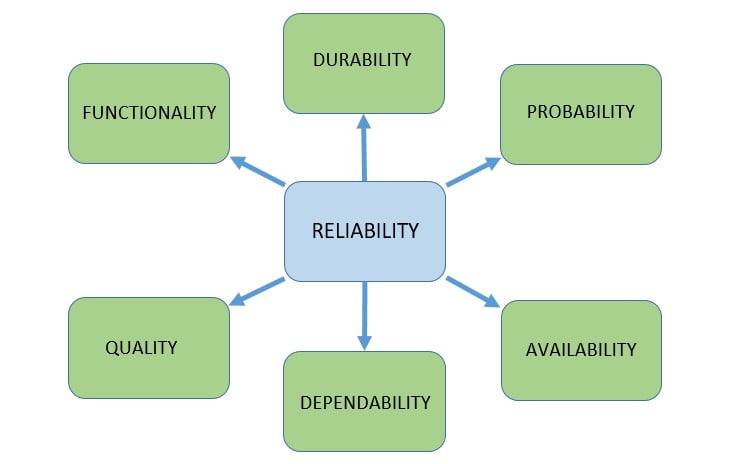In the world of complex systems, ensuring system reliability is paramount. Whether it’s a critical infrastructure network, a transportation system, or a data center powering the digital age, reliability is a must for functionality and safety. In this article, we will explore the components of system reliability, its significance, and the factors influencing it.
The Significance of System Reliability
Enabling Continuous Operations
System reliability is the backbone of uninterrupted operations. In sectors like healthcare, where patient lives depend on medical systems, or finance, where transactions occur around the clock, system downtime can have dire consequences. Reliability ensures that systems remain operational when needed most.
Cost Savings through Efficiency
Reliability also translates to cost savings. Downtime can be expensive, leading to lost productivity, maintenance costs, and potentially damage to a company’s reputation. Reliable systems minimize these risks, ensuring that resources are used efficiently.
Enhancing Safety
In safety-critical systems such as aerospace or nuclear power plants, reliability isn’t optional; it’s mandatory. Reliable systems prevent catastrophic failures that could endanger lives and the environment.
Factors Influencing System Reliability
Component Reliability
At the core of system, reliability depends on the reliability of individual components. Components like processors, memory, and storage devices need to meet stringent standards to ensure they won’t fail unexpectedly.
Redundancy and Fault Tolerance
Redundancy and fault tolerance mechanisms play a crucial role in enhancing system reliability. These techniques involve duplicating critical components or subsystems to ensure that if one fails, the system can continue functioning without interruption.
Environmental Considerations
Environmental factors, such as temperature, humidity, and vibrations, can affect system reliability. Systems operating in extreme conditions require specialized designs and testing to withstand these challenges.
Software Reliability
Software reliability is as crucial as hardware reliability. Bugs, glitches, or vulnerabilities in the software can lead to system failures. Rigorous testing and continuous updates are essential to maintain software reliability.
Strategies for Achieving and Maintaining System Reliability
Robust Design
Designing systems with reliability in mind is the first step. This includes selecting reliable components, designing redundancy where needed, and considering environmental factors during the design phase.
Comprehensive Testing
Thorough testing is essential to identify weaknesses and potential failure points. This includes functional testing, load testing, and stress testing under various conditions.
Predictive Maintenance
Predictive maintenance uses data and analytics to predict when system components might fail, allowing for proactive maintenance and minimizing unplanned downtime.
Continuous Monitoring
Continuous monitoring of system performance is vital. Advanced monitoring tools can detect anomalies in real-time, enabling immediate action to prevent failures.
Regular Updates and Patching
Software reliability is an ongoing effort. Regular updates and security patches help maintain software integrity and protect against vulnerabilities.
Circuit Reliability
In electronic systems, system reliability is much dependent on circuit reliability. Circuit reliability is not just a matter of convenience; it’s a matter of safety, cost-effectiveness, and overall functionality. Imagine the consequences of a circuit failure in a medical device or a communication system—reliable circuits are the foundation upon which modern society is built.
In the following sections, we will discuss about the strategies, best practices, and rigorous tests that engineers and manufacturers employ to ensure the circuit reliability.
Reliability for Safety
In many applications, circuit reliability is a matter of life and death. Consider medical devices like pacemakers or respirators, where circuit failure can have dire consequences. Ensuring that these circuits function flawlessly is a matter of utmost importance.
Cost-Effectiveness
Circuit failures can be expensive. For businesses, downtime due to circuit issues can result in significant financial losses. Reliability minimizes these risks and keeps operations running smoothly.
Consistent Functionality
Whether it’s your smartphone or your car’s engine control unit, you expect consistent performance from electronic circuits. Reliability is what ensures that your devices work as intended day in and day out.
Component Selection: A Crucial Starting Point
The foundation of a reliable circuit lies in the selection of high-quality components. Choosing reputable manufacturers and suppliers ensures that you start with reliable building blocks. Counterfeit or subpar components can lead to premature failures and compromised performance.
Temperature and Lifespan Considerations
Components operating within their specified temperature ranges tend to last longer. When designing circuits for extreme environments, selecting components with wider temperature tolerances can significantly enhance reliability and longevity.
Building Redundancy for Fail-Safe Operation
Redundancy is a powerful tool in ensuring circuit reliability. Implementing duplicate components or subsystems allows a circuit to continue functioning even if one part fails. Redundancy is especially critical in mission-critical applications like aviation and healthcare.
Thermal Management: Keeping Cool Under Pressure
Efficient thermal management is essential to prevent overheating, which can lead to component degradation or failure. Properly designed heat sinks and cooling systems are vital to maintaining optimal operating temperatures.
EMI/RFI Mitigation: Shielding from Interference
Electromagnetic interference (EMI) and radio-frequency interference (RFI) can disrupt circuit operation. Implementing shielding techniques, EMI/RFI filters, and proper grounding practices can safeguard circuits from external interference.
The Art of PCB Design for Reliability
A well-designed printed circuit board (PCB) layout is crucial for reliability. Careful planning to minimize noise, crosstalk, and signal integrity issues, can prevent performance problems down the line. Multilayer PCBs can help separate analog and digital components, reducing interference.
Environmental Testing: Simulating Real-World Conditions
To ensure a circuit’s reliability, it must undergo environmental testing. Thermal cycling, humidity testing, and vibration testing replicate real-world conditions and help identify weaknesses that might lead to failure.
Burn-in Testing: Stressing for Strength
Burn-in testing involves subjecting components or entire circuits to elevated temperatures and stress conditions. This process helps identify and eliminate early failures, ensuring that only robust components make it into the final product.
Functional Testing: Ensuring Performance
Comprehensive functional testing is a critical step in verifying that the circuit performs as expected. It includes testing under normal operating conditions and exploring boundary scenarios to catch potential issues.
Reliability Predictions: Forecasting Circuit Lifespan
Reliability modeling and prediction techniques, such as MIL-HDBK-217 and Telcordia SR-332, allow engineers to estimate a circuit’s expected lifetime. These predictions help set realistic reliability goals.
HALT and HASS Testing: Accelerating Reliability Assessment
Highly Accelerated Life Testing (HALT) pushes circuits to their limits to uncover weaknesses. Highly Accelerated Stress Screening (HASS) screens for latent defects during production, ensuring only reliable products reach customers.
Quality Control in Manufacturing
Rigorous quality control during manufacturing is non-negotiable. Component inspections, solder joint quality checks, and adherence to design specifications are essential to maintaining reliability.
Firmware and Software Testing: A Vital Component
Reliability isn’t just about hardware. Comprehensive testing of firmware and software is equally important. Bugs and vulnerabilities in code can compromise a circuit’s performance and safety.
Documenting and Tracing for Accountability
Detailed documentation of the circuit design, component sources, and testing procedures is essential. Establishing traceability ensures accountability and aids in troubleshooting when issues arise.
Failure Analysis: Learning from Mistakes
When failures occur, conducting thorough failure analysis is critical. Understanding the root cause of a failure helps prevent its recurrence and strengthens future designs.
Continuous Monitoring: Real-Time Vigilance
In critical applications, implementing continuous monitoring systems allows for real-time detection of anomalies and swift responses, reducing downtime and preventing catastrophic failures.
Conclusion
System reliability is the bedrock of modern infrastructure and technology. It ensures that critical systems operate without interruption, saving costs, enhancing safety, and enabling innovation. By considering component reliability, redundancy, environmental factors, and software integrity, organizations can design and maintain systems that stand the test of time.
FAQs
Q1. What is the role of redundancy in system reliability?
Redundancy involves duplicating critical components or subsystems to ensure that if one fails, the system can continue functioning without interruption.
Q2. How does environmental testing impact system reliability?
Environmental testing assesses how a system performs under conditions such as temperature extremes, humidity, and vibrations, helping ensure its reliability in real-world scenarios.
Q3. What is predictive maintenance?
Predictive maintenance uses data and analytics to predict when system components might fail, allowing for proactive maintenance to minimize unplanned downtime.
Q4. How can I ensure software reliability in my systems?
Software reliability is maintained through rigorous testing, regular updates, and security patching to protect against vulnerabilities.
Q5. Why is system reliability essential in safety-critical industries?
In safety-critical industries like aerospace or nuclear power, system reliability is mandatory to prevent catastrophic failures that could endanger lives and the environment.
Q6. What is Highly Accelerated Life Testing (HALT)?
HALT is a testing method that pushes circuits to extreme conditions to uncover weaknesses and potential failure points.
Q7. How can I choose quality electronic components?
Opt for reputable manufacturers and suppliers, and verify component specifications to ensure quality.
Q8. What is the role of EMI/RFI mitigation in circuit reliability?
EMI/RFI mitigation techniques protect circuits from external interference, preserving their integrity and performance.
Q9. Why is thermal management crucial for circuit reliability?
Efficient thermal management prevents overheating, which can lead to component degradation or failure, ensuring long-term reliability.







